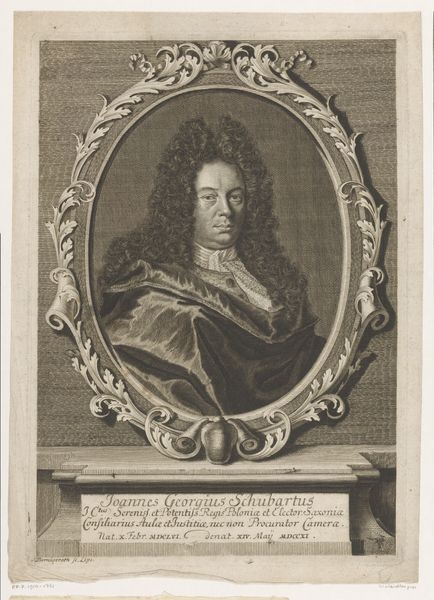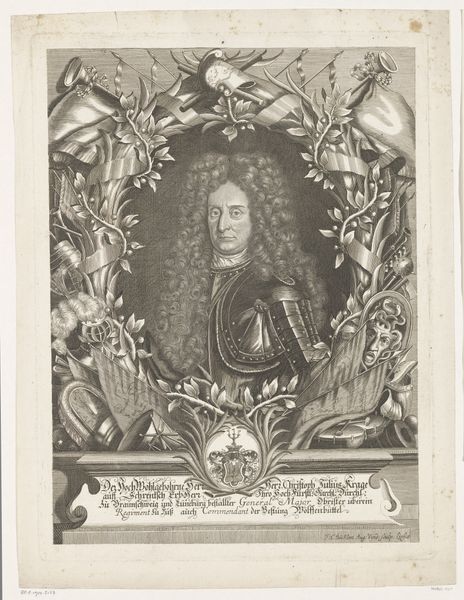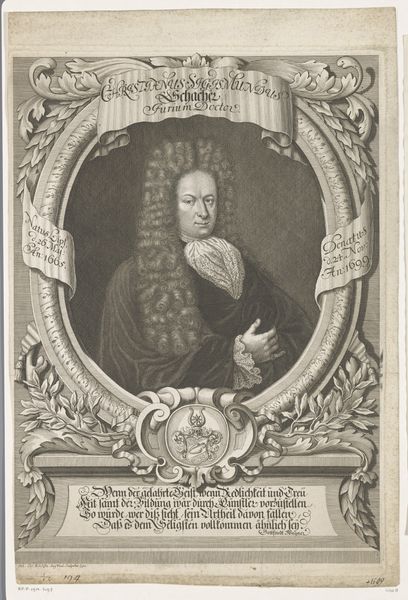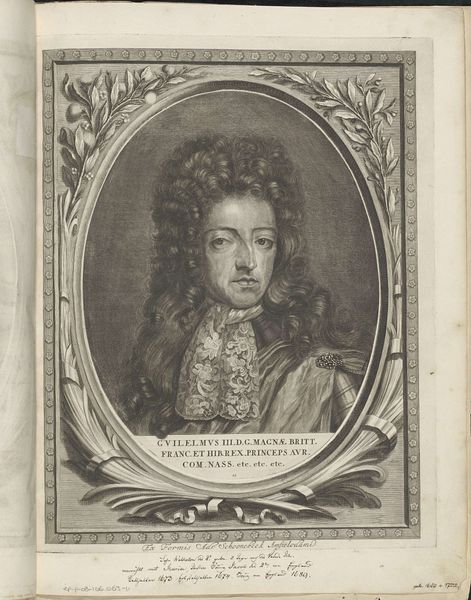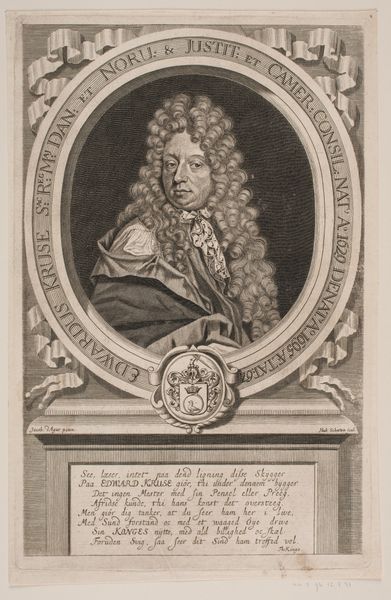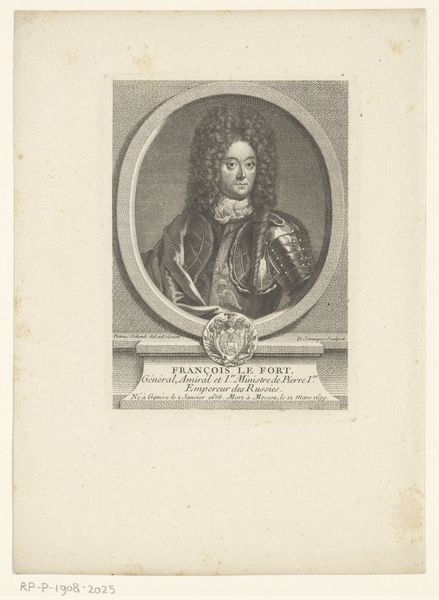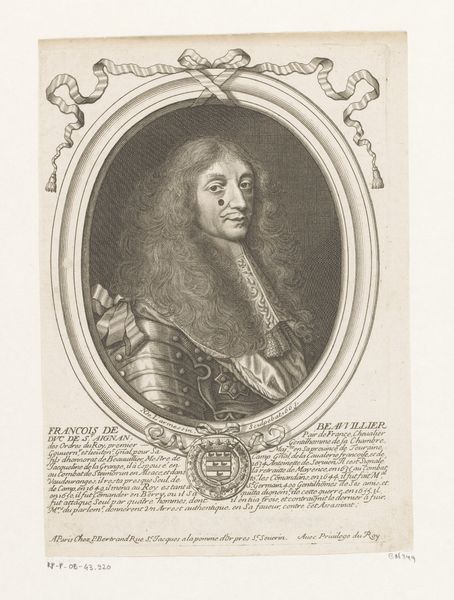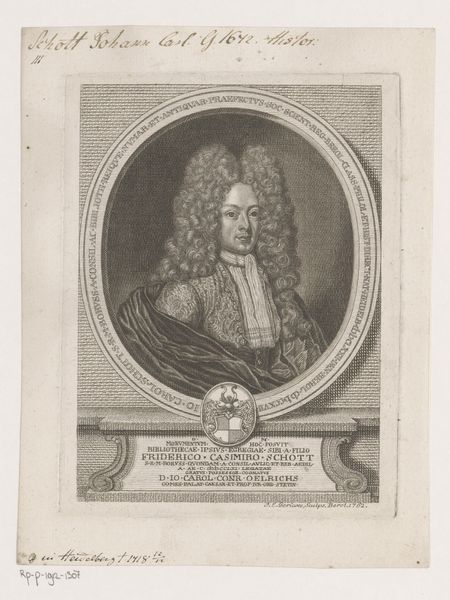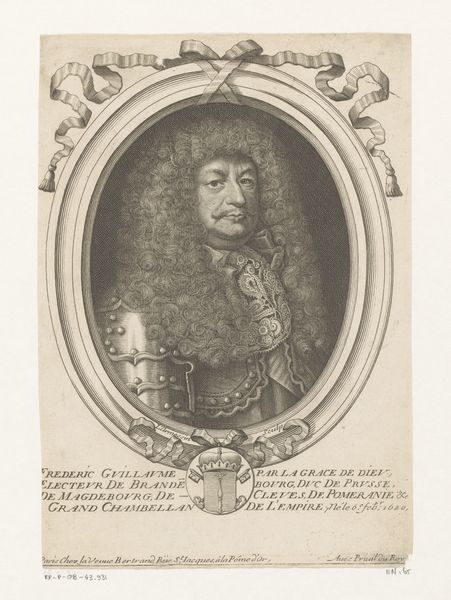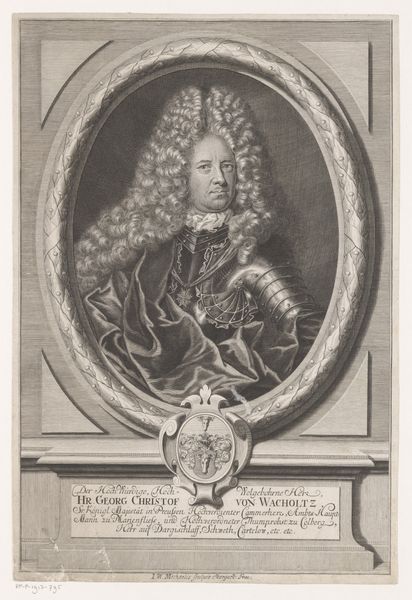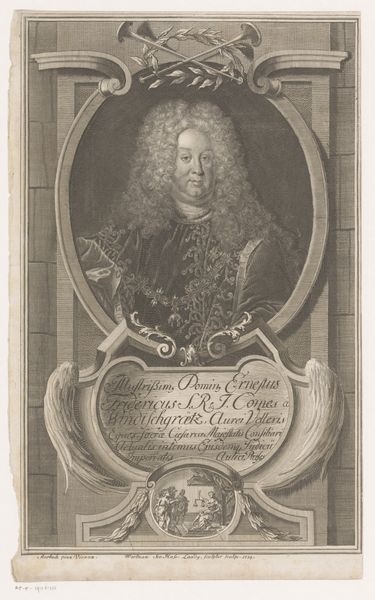
print, engraving
#
portrait
#
baroque
# print
#
old engraving style
#
history-painting
#
engraving
Dimensions: height 331 mm, width 222 mm
Copyright: Rijks Museum: Open Domain
Curator: Here we have a portrait, rendered as a print, titled "Portret van Otto George von Wiedebach". Johann Christoph Boecklin completed it sometime between 1703 and 1709. The print, fitting within the Baroque style, captures Wiedebach encased by ornate detailing. Editor: It’s a striking image, isn’t it? The texture is incredible, even at a distance, with that dense, almost overwhelming wig contrasted with the cold, hard steel of the armor. I'm immediately drawn into the details of status displayed in this portrait. Curator: Indeed. The elaborate presentation signals Wiedebach's position within the socio-political structure of the era. Consider the history-painting element—portraits like this played a critical role in establishing legitimacy and consolidating power. The aristocratic taste preferred such depictions, ensuring both self-fashioning and promotion of ideology. Editor: And it's fascinating how much that ideology is tied into visual cues. The wig itself, isn’t just a fashion statement. Its imposing form symbolizes authority, even virility, amplified by its connection with established family emblems. Look at the crests ringing the central image. They’re like little heraldic echoes. Curator: Exactly. Each crest is laden with symbolic value. In those societies, an individual was partly understood through a complex family lineage and the emblems that visually narrated it. It became less about the man, perhaps, and more about the legacy. These visual statements functioned within specific protocols, reinforcing power and influencing public perception. Editor: But does it work? For modern viewers, does this still evoke that intended response, or has it been so abstracted by time and change that it just serves as another image? What parts of these visual systems, though, still resonate across centuries? I'm particularly struck by how many elements, though literally antiquated, that still have strong associations with authority. Curator: That is a critical consideration, indeed. It is, perhaps, a testimony of image persistency; or rather a reflection on our continuous and active re-shaping of images and cultural values that allows them to bear meaning across contexts. Editor: Right, it really emphasizes how powerful visual symbolism is; and how its ability to mutate allows it to remain relevant over such vast timescales. I see both fragility and lasting power here.
Comments
No comments
Be the first to comment and join the conversation on the ultimate creative platform.


